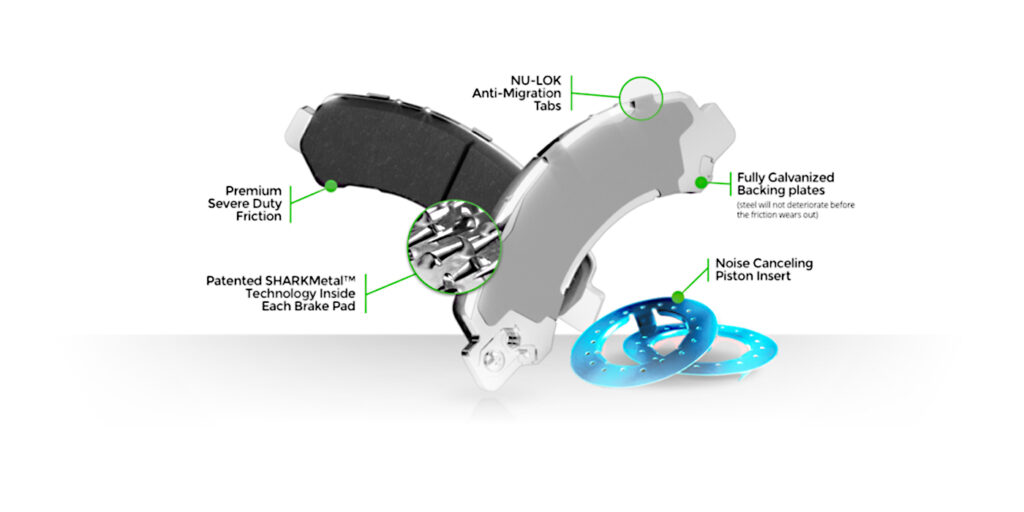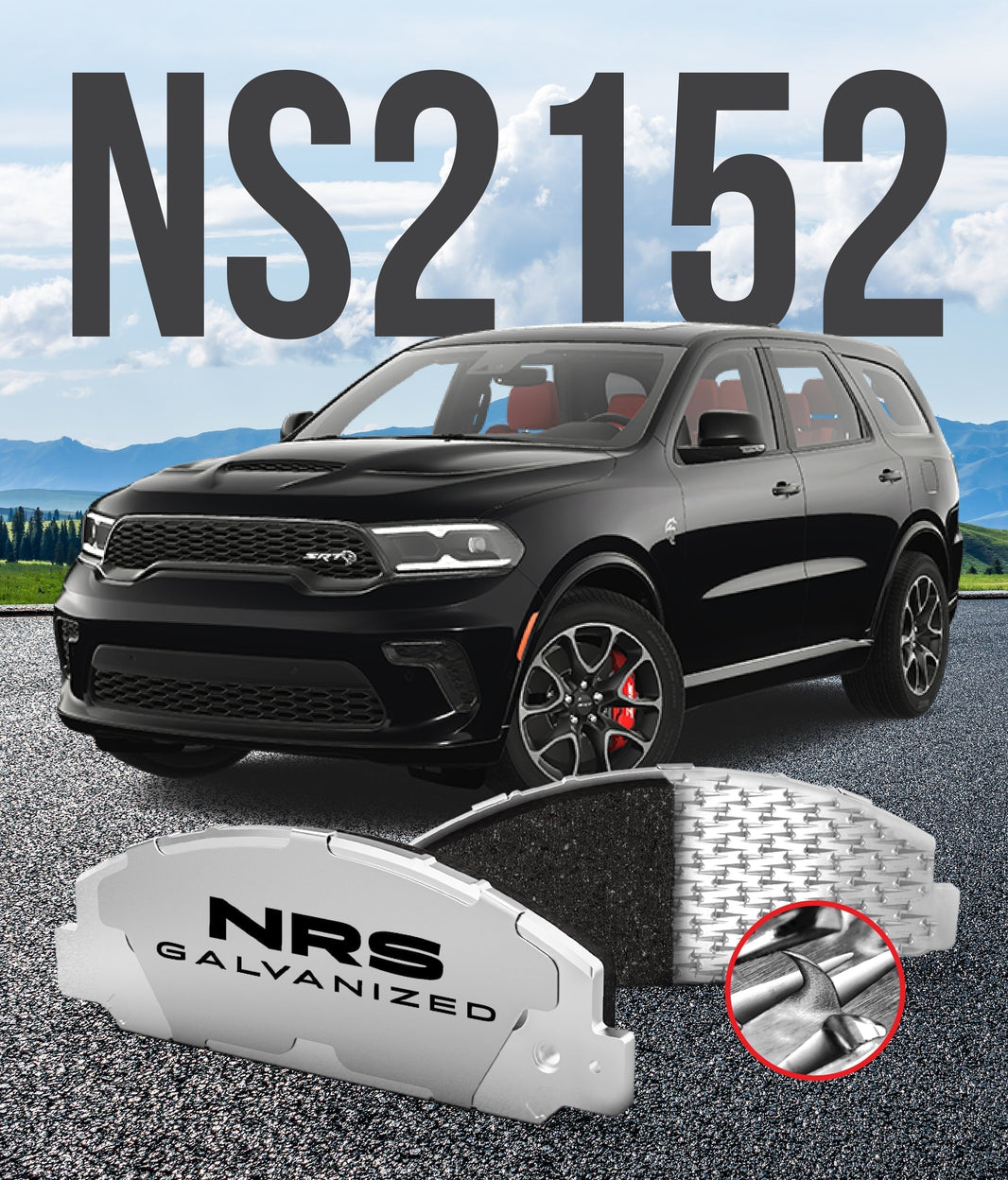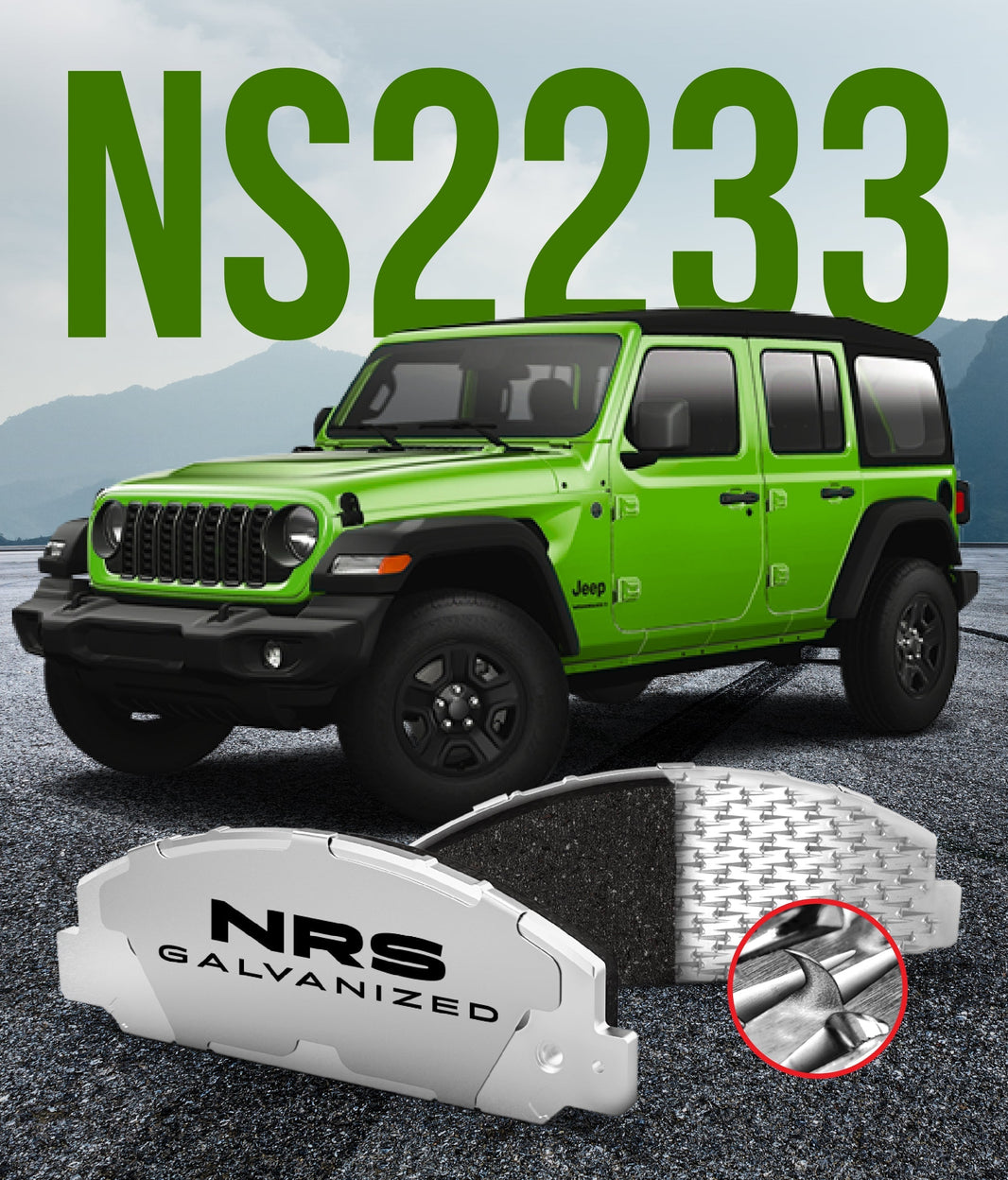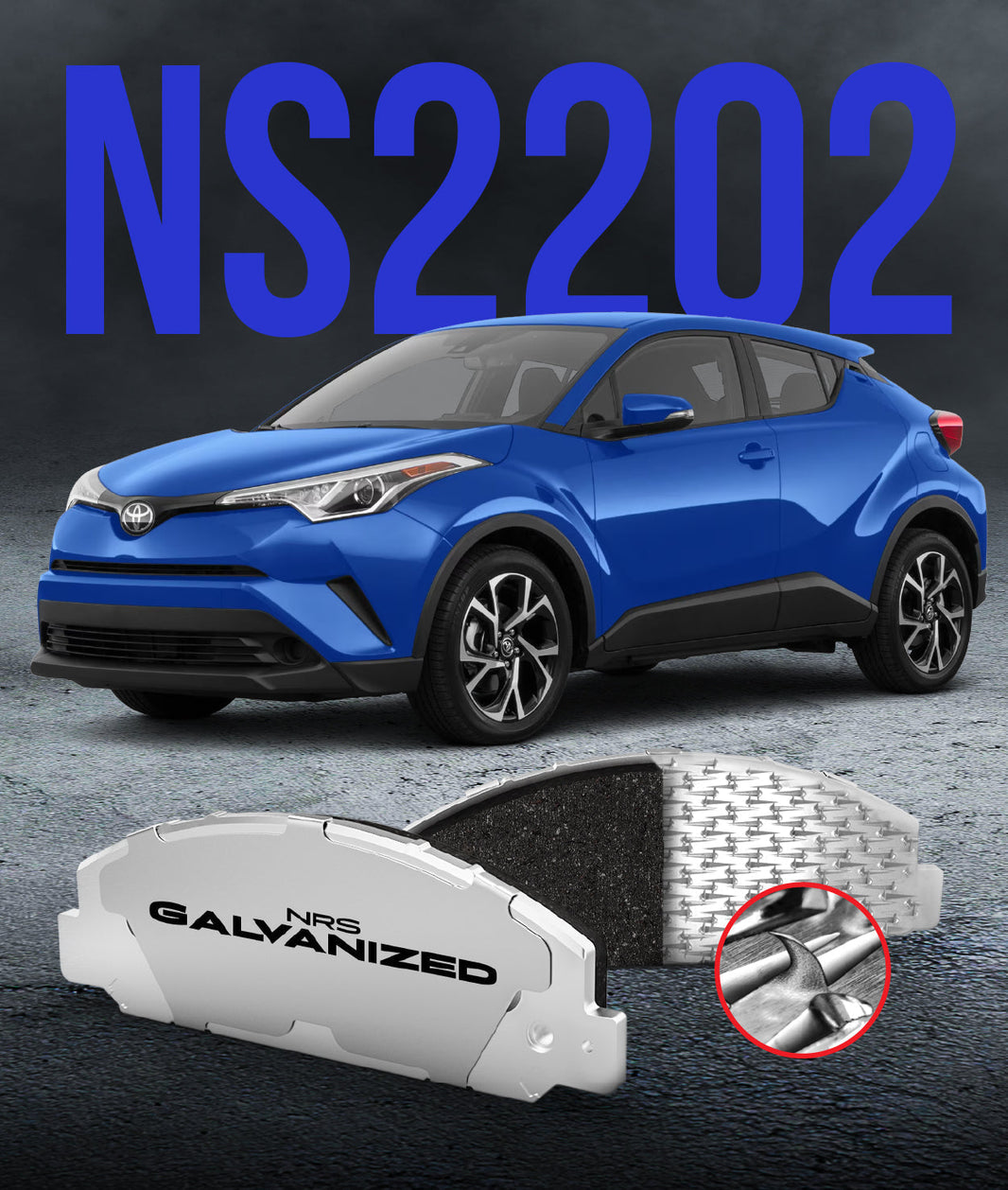Montu Khokhar, CEO of NRS Brakes, and Blake Fuller, Tesla S Plaid driver, discuss developing brake pads for the EV market.
Drivers getting behind the wheel of an EV for the first time are often surprised to learn about regenerative braking. Unlike vehicles with internal combustion engines, electric and hybrid vehicle brakes operate the electric motor in reverse, and this applies a braking force through electromagnetism. This not only recaptures some of the vehicle’s kinetic energy to give a bit of charge to the battery, but it also means the brake pads in these vehicles are used less frequently.
That doesn’t mean EV brake pads should be ignored, though; on the contrary, after a chat with Montu Khokhar, CEO of NRS Brakes, a company that manufactures galvanized brake pads, and Blake Fuller, a professional Tesla S Plaid driver, multiple record holder and CEO of ElectricPerformance TV, you’ll find that by paying special attention to these components, EV drivers can be treated to a big boost in both safety and performance.
Both Fuller and Khokhar recently sat down with The Buzz to discuss how the electric vehicle brake pad market is one that is ripe for growth, and that both safety and performance are critical considerations.
When did NRS Brakes begin manufacturing brake pads for EVs?
Montu Khokhar (MK): Officially in 2019, and we already have the most complete lineup of brake pads in the market for EV vehicles, as NRS Brakes is the leader in first-to-market with all new launches. We have been providing technology solutions to the hybrid/electric market since the major recall of the original Toyota Prius due to rusty brakes that were causing the fiction to separate from the steel backing plate.
What caused this specific rust issue?
MK: Back in 2001, Prius was the first hybrid vehicle out there in a mass way and it was recalled due to a brake defect called friction delamination. Simply put, hybrid and electric cars brake differently than gasoline-powered vehicles. A gasoline vehicle uses brakes frequently, causing them to heat and dissipate moisture. Hybrid and electric cars use their electric motor to slow the vehicle, resulting in less frequent use of their brakes which can cause moisture to build up on the surface of brake pads. When this happens on traditional painted steel brake pads, you’ll get corrosion.
When rust and corrosion get between the friction and the backing plate, it can cause the friction to crack, break away or lift away from the steel backing plate. It’s a potentially fatal situation. There are plenty of YouTube videos you can research that document this process extensively and it is increasingly happening today as more EVs hit the market.
How does NRS Brakes address these challenges?
MK: Rust is a cancer for brakes. To fight it, we first start with clean pickled and oiled rust-free steel to make our steel backing plates. We then apply our patented and award-winning NRS technology to its surface and take it through a meticulous cleaning and zinc-plating process called ‘galvanizing,’ and then – and only then – do we apply the friction material to the steel backing plate. This process ensures the integrity of the bond friction and steel to eliminate delamination and the fully zinc-coated steel ensures that the galvanized backing plate will outlast the friction material, resulting in the longest-lasting brake pads in the market.
Will EV brake pads continue to be an area of focus for NRS Brakes moving forward?
MK: The EV revolution and evolution of the entire automotive industry is in full swing and NRS Brakes is positioned as the market leader in EV brake pads. We recognize the future is in EVs, and that EVs have unique needs with respect to braking and brake pads given the dynamics of regenerative braking. So, I would say yes, EVs will be a large area of focus for NRS moving forward, and will possibly become our primary focus for many years to come.

NRS Brakes develops galvanized brake pads specifically engineered for the Tesla Model S Plaid.
Blake, how did you find the NRS Brakes pads to be different from the stock pads you were using?
Blake Fuller (BF): The biggest difference is the repeatability and consistency of the braking performance, and that’s really important for building confidence in your braking system. The one thing you want to be there for you over and over again is a braking system – it’s really your foundation that you rely on as a driver. Your car can always go faster or slower, but if you don’t have the braking there that you can rely on, it makes it very difficult to push hard. With NRS Brakes, the area that we focused on was really looking at having repeatable performance lap after lap, corner after corner, so that way as a driver it makes it really easy to have confidence. When you have thousands of feet of cliffs and huge rocks, you want to make sure that what you’re reaching for with the pedal is going to work each time. It’s the most critical performance component to have and NRS Brakes delivers it, full stop!
What is something you think the general consumer might be surprised to learn about brake pads for EVs?
BF: Tesla has done an amazing job as a young company in a very short period of time of increasing the reliability of its vehicles to accelerate over and over again. They just haven’t increased the ability of their vehicles to stop over and over again. So, when you go back five to 10 years in a Tesla, you have a car that wouldn’t be able to accelerate over and over again. Now you do, but it just can’t stop over and over again. And believe me, I’m pushing these cars to the limits and really challenging and testing the braking systems.
MK: You know what’s great about Blake driving a Tesla down a mountain – for example at Pikes Peak – is that he is pushing the limits with NRS Brakes so all EV drivers can have a license to feel safe with the feedback he is providing. This can only help make brakes better. We don’t know what great power we give into the hands of average, everyday drivers. For development, we thought: ‘Why not let an expert take the braking to an extreme level.’ And, that gives us a feedback loop so we can continue to design better brakes and continuously improve.
BF: It’s vital as well that brake pads function well at very high temperatures and be consistent, but still need to have enough low-temperature performance and the right amount of coefficient of friction to ensure that the factory systems still work well. Specifically, traction control and stability control relies on brake pads to function reliably. As brake systems overheat, the factory systems fail. And, on Tesla vehicles, autopilot brings a whole new challenge to the requirements of brake pads. For example, on the track, I have tasked the factory system to the point where, within minutes, all the Tesla systems fail. With the NRS pads, we can go up to three times longer without any issues.
When you think about the variety of road surfaces, it is a very difficult challenge to have something that can both work well on dry pavement with very grippy tires as well as in very slippery conditions, whether it’s pouring down rain and hydroplaning or if it’s trying to come to a stop on slushy roads. All of those [factors] must be considered. There is no perfect product out there, however, the best companies find a way to make it so that their products are able to enhance the driving experience to a level that the customer doesn’t have to think about whether or not it’s performing – they just enjoy the drive. And, as a development partner, that’s what NRS Brakes is pushing itself to do. That’s an important thing. It needs to be confidence-inspiring but also something where the customer doesn’t have to think ‘are my brakes going to be there for me?’
Can you give us some insight on the types of conversations you have during development?
MK: For example, you have two different types of drivers coming into EV or Tesla vehicles. You have the performance driver coming into the Tesla vehicle and you have the novice driver. So I’ll ask Blake: What is your mindset on the design of the brake pads to, as you mentioned earlier, “have a balance,” or should we be designing the Tesla brake pad to be more of a performance brake pad like the one you’ve been driving on and do you think that works for the regular everyday consumer or novice driver?
BF: That’s a two-part question. The Tesla vehicles have made speed accessible to more people, more easily than any car or any manufacturer than ever before. You can go online, swipe a credit card, and have a sports car or supercar in your driveway that you can charge at home. The problem is that in making a supercar, it’s kind of like with great power comes great responsibility. Great power should come with great brakes, and they don’t.
MK: Agreed.
BF: The reality is that whenever somebody gets a Tesla, they are less likely to test out the handling or initial braking performance. Most people are not afraid to hit the ‘go’ pedal; the challenge is that very few people have a lot of experience with the ‘stop’ pedal. These cars build speed so quickly that it makes what is a really unsafe speed very accessible and feel safe, but the challenge is that the brake pads are not up to the task of stopping that car multiple times from those speeds. Somebody can go out and accelerate quickly once in their Tesla and it will slow them back down, but if they were to do that repeatedly, they will find out that their brake pads fail.
I’m hearing this repeatedly from people who traditionally had never gone to a drag strip before or never wanted to race their car, but now they are excited to go to the track. However, after the second or third pass down the quarter-mile, the car’s not stopping at the end of the quarter. To me it’s a safety issue, it’s a reliability concern, and I think that there needs to be two pathways with brake pads, for EVs, especially Teslas.
One is a general consumer pad that will keep the same OEM type of feel that they’re used to but improve it in two major areas. The first area is to have longevity like what NRS offers with its galvanized backing plates and its mechanical attachment. Eliminate any chance of friction delamination and fight rust and corrosion.
BF: It kind of feels akin to opening a parachute and then suddenly the parachute cords all start fraying or breaking away and now you’re free-falling to earth. It’s there, and then it’s not. And you’re just sailing.
Those are the two areas. Whether it’s on record or off record, I’m legitimately concerned with especially the top models of the Teslas because of how much they can accelerate and how much they can’t stop. You can’t get three corners in on a racetrack without having an issue with the braking system. It’s a combination of pads and their fluid choice. Even with the fluids being at a higher temperature, the pads themselves don’t last even a full lap.
How can NRS Brakes be there for a driver interested in EVs and hybrids based on being environmentally conscious?
MK: First, by NRS Brakes producing galvanized brake pads, we increase the life of the brake pad; you automatically decrease the number of discarded brakes thrown into our landfills. What people don’t realize is that brake pads mostly rust and fall apart, not necessarily wear all the way down like they are supposed to. A 2008 Frost and Sullivan report showed approximately 60 million brake pad sets were sold in North America and was predicted by the industry to reach 70 million sets by 2014. Here’s the shocking part: The 2014 actual number ended up at 96.3 million. That’s over 26 million more brake pad sets than we all predicted.
A study by Global Brake Safety Council showed that most of these pads are rusted, with broken friction or delaminated friction, not necessarily fully-worn brake pads, and they end up in our landfills – not to mention the average consumer is paying for this [in] many unnecessary and avoidable brake jobs per year. With galvanized brake pads, we are helping eliminate this major issue in a big way. Take away rust and you get a longer-life brake pad. Longer life means protecting our environment and our wallets. Period.
BF: Wow, amazing to think about. Sticking to the rusty and flaky friction topic, I also want to touch back on safety. A lot of times people don’t think that a few feet of stopping distance matters. In my world, a few feet can be the difference between going over a sheer cliff or not. It doesn’t matter if I’m going 3 mph or not, over is over. How this applies to our everyday life is simple. The average child and the average person are less than 2 ft. thick. The difference between hitting a pedestrian or not is just a couple feet, and that matters. It’s a very important thing for people to think about, and the repeatability of brake performance because in stop-and-go traffic, down hills, and all that kind of stuff, you want to make sure it’s there for you.
The other thing to think about for EV owners: Just because your brake pad isn’t worn out doesn’t mean it doesn’t need replacement. People who seldom drive their cars often think “there’s tread left on my tires, they’re OK,” but they don’t realize that tires also age out and they need to be replaced.




